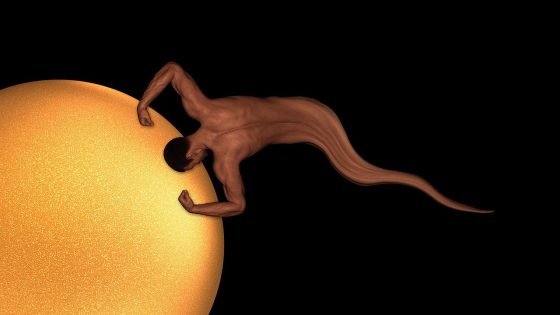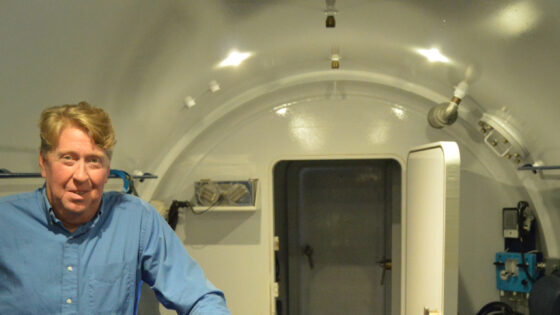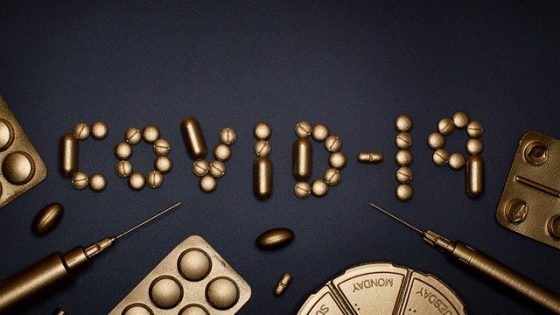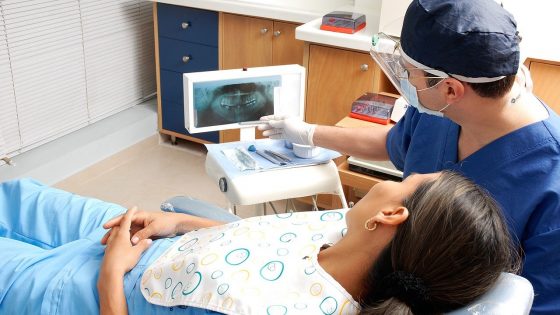Castleman disease
A rare disorder in which benign (not cancer) growths form in lymph node tissue. There are two main ways that Castleman disease occurs: localized (unicentric) and multicentric. Unicentric Castleman disease affects only one group of lymph nodes in one part of the body, usually in the chest or abdomen. It may not cause symptoms. Multicentric Castleman disease affects many groups of lymph nodes and lymphoid tissue all through the body. It can weaken the immune system and cause problems such as infection, fever, weight loss, fatigue, night sweats, nerve damage, and anemia. People with Castleman disease have an increased risk of lymphoma. Also called angiofollicular lymph node hyperplasia and giant lymph node hyperplasia.
castrate-resistant prostate cancer
Prostate cancer that keeps growing even when the amount of testosterone in the body is reduced to very low levels. Many early-stage prostate cancers need normal levels of testosterone to grow, but castrate-resistant prostate cancers do not. Also called CRPC.
castration
Removal or destruction of the testicles or ovaries using radiation, surgery, or drugs. Medical castration refers to the use of drugs to suppress the function of the ovaries or testicles.
CAT scan
A procedure that uses a computer linked to an x-ray machine to make a series of detailed pictures of areas inside the body. The pictures are taken from different angles and are used to create 3-dimensional (3-D) views of tissues and organs. A dye may be injected into a vein or swallowed to help the tissues and organs show up more clearly. A CAT scan may be used to help diagnose disease, plan treatment, or find out how well treatment is working. Also called computed tomography scan, computerized axial tomography scan, computerized tomography, and CT scan.
CAT-8015
A drug used to treat hairy cell leukemia that came back or did not get better with at least two other systemic therapies, including treatment with a purine nucleoside analog (a type of anticancer drug). CAT-8015 contains a monoclonal antibody called moxetumomab that binds to a protein called CD22, which is found on B cells (a type of white blood cell) and some types of leukemia cells. It also contains a bacterial toxin called PE38, which may help kill cancer cells. CAT-8015 is a type of immunotoxin. Also called anti-CD22 immunotoxin CAT-8015, Lumoxiti, and moxetumomab pasudotox.
Catapres
A drug used to treat high blood pressure. It is also being studied in the treatment of certain types of cancer pain and as an aid to stop smoking. It blocks the release of chemicals from nerve endings that make blood vessels constrict (get narrower). Catapres is a type of antihypertensive agent and a type of alpha-adrenergic agonist. Also called clonidine hydrochloride.
cataract
A condition in which the lens of the eye becomes cloudy. Symptoms include blurred, cloudy, or double vision; sensitivity to light; and difficulty seeing at night. Without treatment, cataracts can cause blindness. There are many different types and causes of cataracts. They may occur in people of all ages, but are most common in the elderly.
catch-up vaccination
The practice of giving a vaccine to people who did not receive it at the recommended age. Catch-up vaccines may be given to a person who has not been previously vaccinated, who has missed a scheduled vaccine dose, or who has not completed a vaccine series. They may also be given to some people, such as those with a weakened immune system, who might be at high risk of certain types of infection, such as human papillomavirus (HPV) infection.
catechin
A substance found in tea that helps protect cells from damage caused by free radicals. Free radicals are unstable molecules that are made during normal cell metabolism (chemical changes that take place in a cell). They can build up in cells and cause damage to other molecules. This damage may increase the risk of cancer and other diseases. Catechins are being studied in the prevention and treatment of cancer. A catechin is a type of antioxidant.
catechol
A chemical originally isolated from a type of mimosa tree. Catechol is used as an astringent, an antiseptic, and in photography, electroplating, and making other chemicals. It can also be made in the laboratory.













